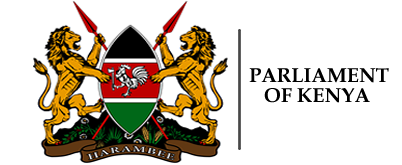Historical Background
The British colonial administration, which was in charge of the then Kenya protectorate, established a Legislative Council (LEGCO) in 1907 to advise the then Chief Minister on the running of the colony. Its Members were nominated from the administration with the Chief Minister as Speaker, on the one hand, and the settler farming community on the other.
Kenya became a de facto British colony in 1920, with the Governor representing the King. For many years, the African population which had no vote, was represented in the LEGCO by an appointee of the Governor. The first African Member was nominated in 1944.
In 1957, after the acquiring of voting rights by Africans based on wealth and education, the first eight elected Africans joined the LEGCO. This development accelerated the country’s movement towards independence in 1963. The LEGCO became the first bi-cameral parliament. However, this did not last long as the Senate merged with the House of Representatives to form the National Assembly in 1966.
The country has since independence had a consistent Parliamentary System of Government, with the President both as an elected Head of State and a Member of the National Assembly representing a constituency. General elections have been regularly (every five years) conducted to renew the mandate of the Government.
Post-independence Kenya became a de facto one party state in 1967 but matters changed substantially in 1982, when parliament passed a law to make it legally so. However, after a lot of agitation, the constitution was amended in 1991 to allow for the country to revert to political pluralism. This enabled a joint opposition alliance to remove the ruling party KANU, which had been in power since independence, in the 2002 General Elections. The current Parliament is the 9th Parliament.
Following the clamour for the review of the constitution which gathered momentum in the 1980s, the Constitution of Kenya Review Act, Chapter 3A of the Laws of Kenya was enacted by Parliament in 2001 to facilitate a comprehensive review of the Constitution by the people of Kenya. The objectives of the review process were to guarantee peace, national unity and integrity of the
Republic of Kenya, to establish a free and democratic system of government and to provide for the separation of power and checks and balances of the three organs of state, i.e. the executive, the legislature and the judiciary. The review also sought to promote people’s participation in elections, devolution of power, to recognize ethnic and regional diversity, and to ensure provision of basic necessities for all Kenyans, among others.
The review process which commenced in 2001 was conducted by the Constitution of Kenya Review Commission, the Constituency Constitutional Forum, the National Constitutional Forum, the Referendum and the National Assembly.
All the organs of review were expected to be accountable to the people of Kenya and to ensure that the review process was an all inclusive one taking care of the rights and interests of all groups (socio-economic status: race, gender, religion, age, disability, minority, etc.) and the national interest.
At the conclusion of the review exercise at the National Constitutional Forum, now popularly known as “the Bomas” (after the Bomas of Kenya venue where the talks were conducted), a Referendum, as stipulated by the Review Act, was conducted on the Draft Constitution. The document was rejected by the people by 57% to 43% in a National Vote. The process had gone full circle and now the government has gone back to the drawing board to chart the review process once again.















